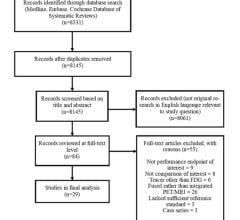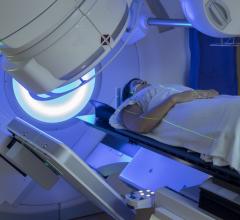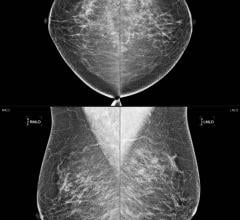December 17, 2014 — Although the use of a type of radiation treatment that is shorter in duration and less costly has increased among women with early-stage breast cancer who had breast conserving surgery, most patients who meet guidelines to receive this treatment do not, according to a study appearing in the Journal of the American Medical Association (JAMA). The study was released to coincide with the San Antonio Breast Cancer Symposium.
Breast cancer accounts for the largest portion of national expenditures on cancer care, estimated to reach $158 billion in 2020. Breast conservation therapy is the most common treatment for early-stage breast cancer. Whole breast irradiation (WBI), recommended for most women after breast conserving surgery, reduces local recurrence and improves overall survival. Conventional WBI, comprising 5 to 7 weeks of daily radiation fractions (i.e., treatments), has been the mainstay of treatment in the United States. Hypofractionated WBI is a shorter duration treatment alternative to conventional WBI, comprising fewer but higher-dose fractions generally delivered over 3 weeks. Based on high quality evidence from clinical trials, expert guidelines in 2011 endorsed hypofractionated WBI for selected patients with early-stage breast cancer and permitted hypofractionated WBI for other patients, according to background information in the article.
"Hypofractionated WBI increases convenience, reduces treatment burden, and lowers healthcare costs while offering similar cancer control and cosmesis [cosmetic outcomes] to conventional WBI. Furthermore, patients prefer shorter radiation treatment regimens," the authors write.
Justin E. Bekelman, M.D., of the University of Pennsylvania Perelman School of Medicine, Philadelphia, and colleagues examined the usage and costs of hypofractionated WBI between 2008 and 2013—before and after the publication of key clinical trials and updated practice guidelines. The researchers used administrative claims data from 14 commercial health care plans covering 7.4 percent of United States adult women in 2013, and classified patients with incident early-stage breast cancer treated with lumpectomy and WBI from 2008 and 2013 into two groups: (1) the hypofractionation-endorsed cohort (n = 8,924) included patients 50 years of age or older without prior chemotherapy or axillary lymph node involvement and (2) the hypofractionation-permitted cohort (n = 6,719) included patients younger than 50 years or those with prior chemotherapy or axillary lymph node involvement. For this analysis, hypofractionated WBI was 3-5 weeks of treatment; conventional WBI was 5-7 weeks.
The researchers found that hypofractionated WBI increased from 10.6 percent in 2008 to 34.5 percent in 2013 in the hypofractionation-endorsed group and from 8.1 percent in 2008 to 21.2 percent in 2013 in the hypofractionation-permitted group. Adjusted average total healthcare expenditures in the year after diagnosis were $28,747 for hypofractionated and $31,641 for conventional WBI in the hypofractionation-endorsed group (difference, $2,894) and $64,273 for hypofractionated and $72,860 for conventional WBI in the hypofractionation-permitted group (difference, $8,587). Adjusted average total 1-year patient out-of-pocket expenses were not significantly different between hypofractionated vs conventional WBI in either group.
"In the United States, although the 2011 practice guidelines concluded that hypofractionated and conventional WBI were 'equally effective for in-breast tumor control and comparable in long-term side effects' for selected women, the guidelines stopped short of recommending hypofractionated WBI as a care standard to be used in place of conventional WBI. The absence of a clear recommendation may have contributed to slower uptake of hypofractionation in the United States than in other countries. In 2013, we observed more pronounced uptake of hypofractionation; evaluation of future treatment patterns will be important to document whether or not this trend reflects the beginning of more widespread adoption," the authors write.
For more information: www.jamanetwork.com


 August 09, 2024
August 09, 2024 








